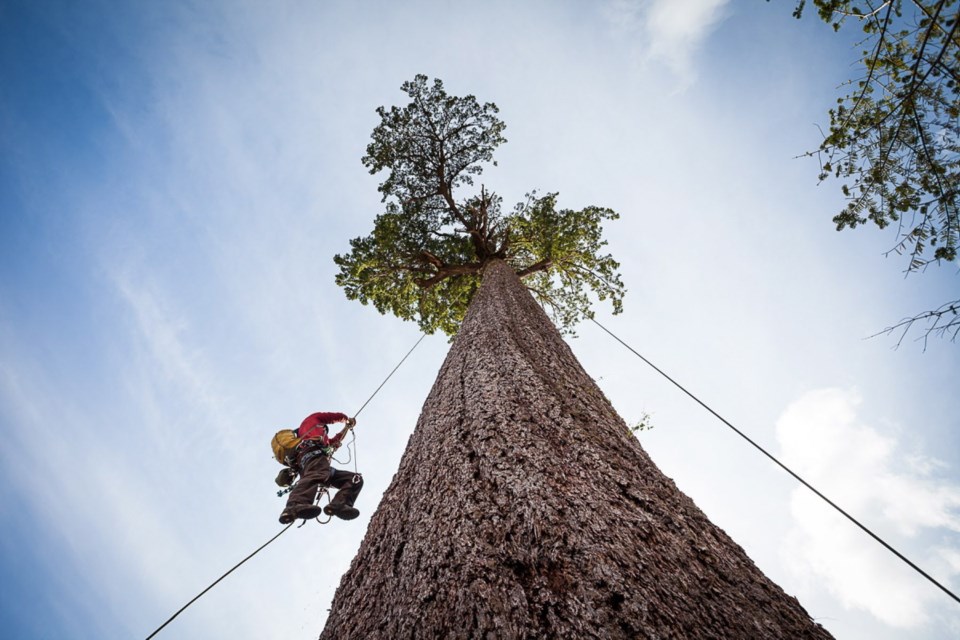There’s a good chance that the province’s largest trees still haven’t been identified, and researchers are inviting the public to join the search.
The B.C. Big Tree Registry has moved online with the goal of making information about big trees more accessible.
“In just the past six months, the second-largest Douglas fir has been identified [near Port Renfrew] and the third-largest Sitka spruce was just found and measured on Haida Gwaii,” said Sally Aitken, professor of forests and conservation sciences at the University of British Columbia. “So there are big trees out there.”
The B.C. Big Tree Registry has been around since 1986. But as recently as 2010, when it came into UBC’s possession, it was a mess of paper records.
“It consisted of several bankers’ boxes of paper records, maps of various sorts and qualities, some photos and then there was just a single list of trees,” Aitken said. “It was not something that people could really access information from easily.”
To nominate a tree, professional foresters and biologists filled out a form and mailed it to the Big Tree Registry committee.
Now, the public can submit nominations online. Once reports are verified by volunteers with expertise in tree measurement, the trees will be entered into the registry and identified on an online map.
“With the new registry, I think, came a new philosophy,” Aitken said. “We need lots of people to be looking for these trees and we can enlist the public to be a part of that. We can also make people enthusiastic about trees, and big trees, by telling them where the trees that have already been identified are and making it easier to find them.”
The map already shows dozens of trees on Vancouver Island and the Gulf Islands, including Big Lonely Doug, believed to be the second-largest Douglas fir in the province. It names species “champions,” based on a formula involving height, circumference and crown.
Vancouver Island and the Southern Gulf Islands are home to eight champions. Among them are a shore pine in Esquimalt, a Pacific dogwood on Saltspring Island and a seaside juniper in North Saanich.
Large-tree species draw the most attention and smaller species are often overlooked, said Aitken. That means there may be big trees within small species right under our noses.
The scope of the registry has expanded beyond a “Top 10” list of largest trees within a species. Now, the committee is collecting information on as many big trees as possible. If a kindergarten class wants to go out and measure trees, the information they collect might be useful, Aitken said.
The committee is seeking volunteers with expertise in tree measurement to verify nominations, as well as photos of already-reported trees.
Keeping track of trees and forests has an important role in conservation, Aitken said. “For one thing, we just like knowing they’re there. They’re the biggest organisms that we can touch and feel and walk right up to. I think the idea of these very large, very old living things is compelling,” she said. “But if we don’t know how many are out there, we can’t monitor them and we can’t work to protect them.”
The registry is online at bcbigtree.ca.



